Are you looking for a comprehensive guide to AGM batteries? You’ve arrived at the correct location! We’ll answer some of the most frequent questions about AGM batteries in this post. We’ll offer tips on how to tell if your battery is an AGM battery, as well as discuss the advantages of doing so. This article is for everyone, whether you’re considering switching to AGM batteries or just want to learn more about them.
Table of Contents
Definition of AGM Batteries
AGM batteries belong to the family of lead-acid batteries. These batteries have been in use for over a hundred years, and they are one of the most widely used battery types in automobiles and vehicles. The acronym AGM stands for “Absorbed Glass Mat.” Reasoning behind this term is pretty simple and it lies in the construction. In AGM batteries positive/negative lead plates are separated by a special glass mat. This mat works as a safety mechanism by absorbing the electrolyte.
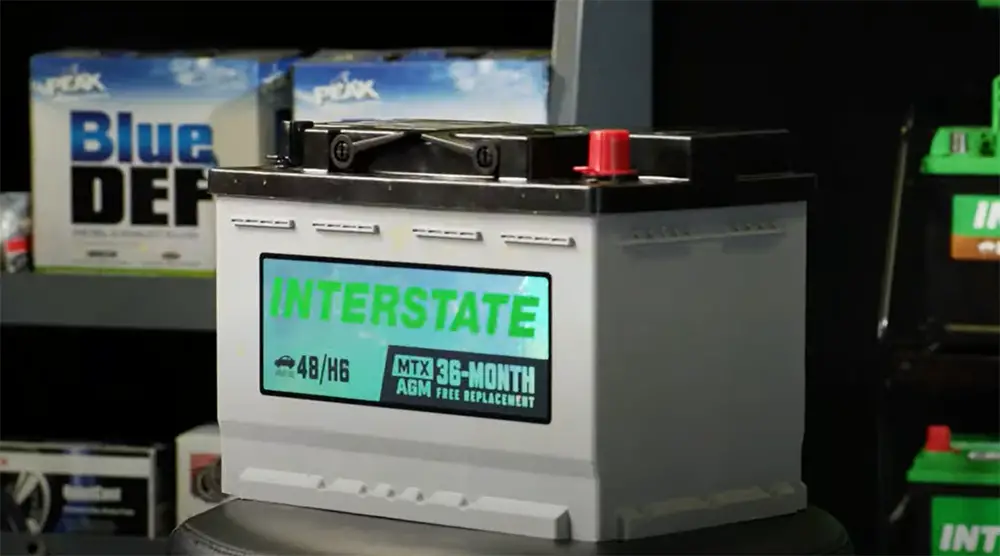
AGM batteries are much safer than wet cell ones because they do not leak electrolyte. This makes them perfect for use in places where there’s a risk of flooding or accidental spills, such as RVs and boats! They’re also incredibly easy to maintain – you won’t need to constantly water them to ensure they won’t dry out. [1], [2]
Uses For AGM Batteries
AGM batteries are frequently utilized in high-end automobiles and in applications where uninterrupted power is required. They’re also used in places where vibration or spillage may be a problem, such as ATVs, golf carts, and boats.
AGM batteries employ a series of lead plates that are covered in an absorbent glass mat to generate electricity. The mat then soaks up the electrolyte, and this is what provides power to the battery. The big advantage of this battery type is that it can be mounted in any position, even upside down, and it will still work effectively. [2], [3], [4]
Comparison of AGM Batteries and Flooded Lead Acid Batteries
Although both AGM and flooded batteries belong to a big family of lead acid batteries, there are some major differences between them.
Despite their age, lead-acid batteries are still one of the most common battery types used in vehicles even today. There are many variations of these batteries: flooded lead acid, which has water inside it; gel based on calcium magnesium crystals that store energy better than other compounds but must be used close to 100% acquaintance with plates before they become active enough load capacity as well AGM (absorbed glass mat). In this article however, we will only compare AGM and flooded batteries.
AGM batteries are a newer kind of lead acid battery that has plenty of advantages on its own.
The main difference between both battery types lies in the structure itself. Mainly, in the way the electrolyte is stored in the battery. In a flooded lead-acid battery, the electrolyte is a liquid that sits between the lead plates. The main downside is that it can move around inside the battery. In an AGM however, the electrolyte is trapped within a safety glass mat separator between the + and – lead plates and is being held there.
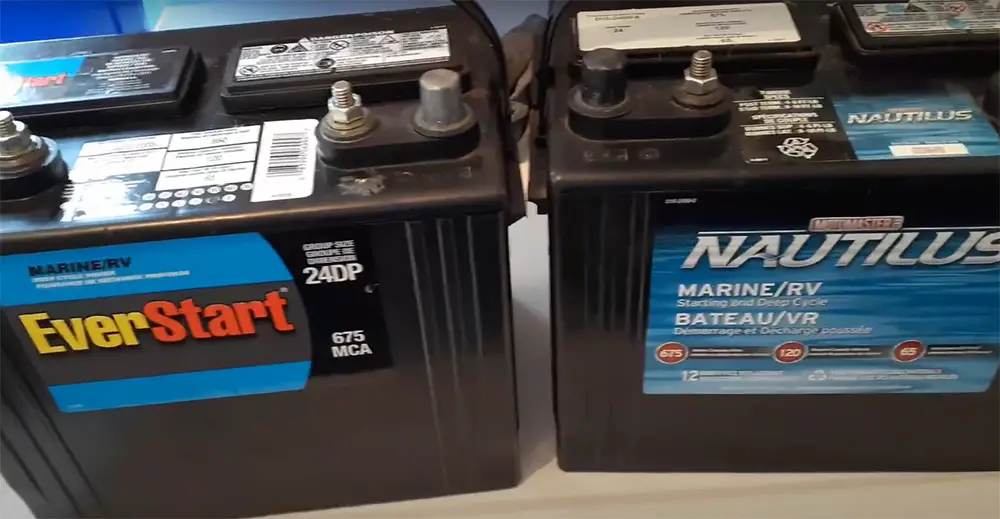
This is the main reason as to why AGM batteries have a better vibration and shock resistance than flooded batteries. It also makes them less likely to leak, which makes them safer to use in enclosed spaces like RVs and boats.
Let’s take a look at some more differences between these batteries. [5]
Price
One of the most obvious differences between AGM and flooded batteries is their price. AGM usually typically cost more than their counterpart, but they also have a number of advantages that make them worth the extra cost. Flooded batteries on other hand are much cheaper than that despite having no less demand.
Maintenance
One of the main benefits of AGM batteries is that they require little to no maintenance, while lead acid batteries need regular check-ups and watering to prevent them from drying out.
This is one of the main reasons why AGM batteries are usually used in situations where the device or vehicle will be left unattended for long periods of time, such as in emergency power systems.
Lead acid batteries are not safe to use in confined spaces because they produce a small amount of hydrogen gas when charging, which can be explosive. However with AGM batteries this is not an issue since there’s no production or accumulation of the harmful chemical element.
Charging
Lead-acid batteries have a high internal resistance which makes them slower at charging. AGM, or acid gel mylar as they are more commonly known, can charge much faster because it doesn’t have this problem and will often be done within half of the time it takes for another type of battery.

The advantages of using an AGM battery are many, but there is one major drawback. These types of cells can be more easily damaged by overcharge than flooded lead-acid batteries and need to have their charge monitored closely when being charged.
Other advantages of AGM batteries include:
- Their ability to be recharged more times than lead acid ones without affecting performance or lifespan.
- They’re light and compact, making them perfect for applications where weight is an issue.
- They are sealed, so there is no risk of spillage or leaks. This makes them safer to use and easier to maintain. [1], [3]
How to Check if Your Battery is AGM?
If you’re not sure whether your battery is AGM or not, there are a few ways to check. Let’s go over them!
Check the labels
The first way is to check the battery labels. This should be easy enough to do. Once you’ve located the label, look for key phrases like “AGM” or sometimes “Absorbed Glass Mat” If you see either of these phrases, then the doubts should be cleared.
If there’s no AGM label, that doesn’t necessarily mean that your battery isn’t one. Some manufacturers simply don’t include those terms on the label. In that case, move on to the next method.
Check the design of top of the battery
The next way to check if your battery is AGM is by looking at the top of it. All AGM batteries have a pressure release valve on the top of the battery. The pressure release valve on an AGM battery provides a safety feature to reduce the pressure within and prevent any excess fluid from being released. If your battery does not have a pressure release valve, then it is not an AGM battery.
Shake the battery
One last way to check the type of your battery is to give it a little shake. If you hear sloshing around inside, then it’s not AGM but a flooded battery. Instead, you should aim to hear a wiggling sound. This is due to the glass mat separator that is used in AGM batteries. This method isn’t foolproof, but it can give you a pretty good idea. Be sure to always wear protective goggles and gloves before proceeding to shake the battery as the acid can be hazardous if spilled. Finally, you can always consult your owner’s manual or contact the manufacturer directly. [2], [6], [7]
Can AGM Batteries Be Replaced?
First, you’ll need to make sure that the replacement battery is indeed an AGM battery. If it’s not, then it won’t work properly or can even damage your vehicle. Second, you’ll need to ensure that the replacement battery is compatible with the device you’re planning to use it in. Third, you should only replace the battery if it’s absolutely necessary.
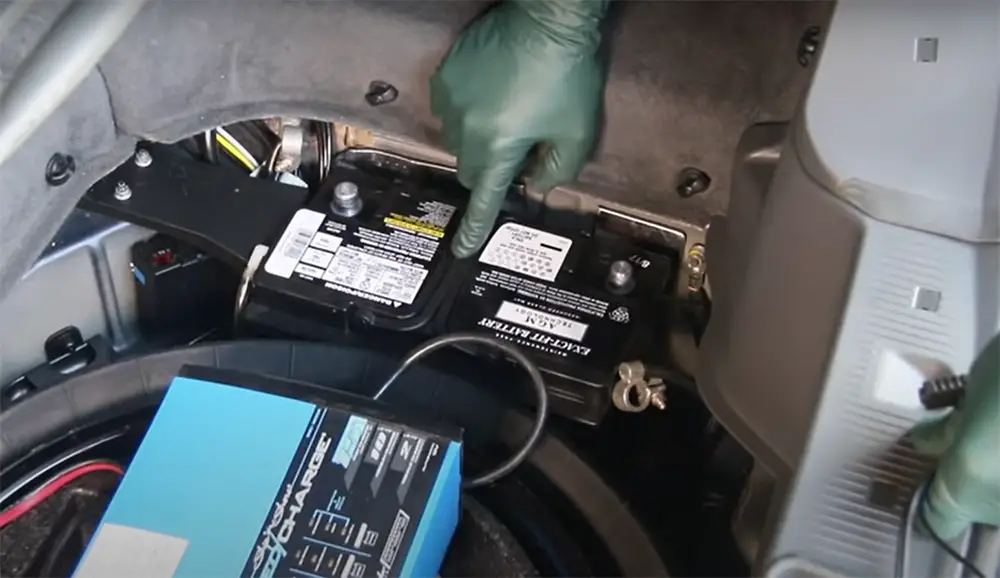
AGM batteries are meant to endure longer than typical lead-acid batteries, so if yours needs replacing, get a high-quality one to ensure it will last as long, if not longer. In addition, the replacement process is a little more involved than simply swapping out the old battery for a new one.
Once you’ve found a suitable replacement battery, you will need to follow the instructions that come with it and install it in your car or machinery. If you’re not comfortable doing this yourself, then you can always take it to a professional mechanic or technician. [2], [8]
Recycling AGM Batteries
AGM batteries can be recycled, but it’s important to check with your local recycling center first to see if they accept them. AGM batteries contain lead and other toxic chemicals, so they must be disposed of properly.
When recycling AGM batteries, it’s a must to follow the instructions provided by the recycling company. Most companies require that the batteries are shipped in a special container with specific labels. Shipping the batteries in an improper container could result in a fire or explosion. [1]
Tips on Charging AGM Battery
The best way to ensure your battery charges quickly and safely is by using a high-quality charger designed specifically for AGM batteries. Many chargers on the market today are not capable of properly charging AGM batteries, and improper charging can lead to reduced battery life and performance.
When charging an AGM battery, it is important to use the proper settings on the charger. Most AGM battery manufacturers will have specific recommendations for charging their batteries. Be sure to follow these recommendations when charging your AGM battery.
It is also important to monitor the voltage of the battery during the charging process. In general, AGM batteries should be charged to a voltage of around 14.6 or 14.8 volts. Charging the battery to a higher voltage can damage the battery and reduce its life. [1], [9], [11]
Maintaining AGM Batteries
While maintaining AGM batteries is fairly easy, there are still a few things to keep in mind.
Maintain the proper max discharge level
Charge the battery fully before leaving it unused
AGM batteries should be charged to 100% before being left unused for extended periods of time. This will help prevent sulfation, which can damage the battery and shorten its lifespan.
If you do not plan on using your battery for a long period of time, it is best to store it in a cool, dry place. AGM batteries should also be stored in a well-ventilated area to prevent explosive gasses from building up inside the battery. [10]
FAQ
Can I replace the AGM battery with a standard lead battery?
The answer is no, you cannot replace the AGM battery with a standard lead battery. The AGM battery is designed to work with a specific type of charger that will not work with a lead battery. This is because AGM batteries require a different charge rate and voltage than lead batteries.
How do I know what type of battery I have?
The most common way to determine what type of battery you have is by looking at the size and shape. AGM batteries are typically rectangular with smooth, curved edges. Another way to determine the type of battery is by looking at the label. The label on an AGM battery will typically say “AGM”, so no surprises here!
How can you tell the difference between AGM and gel batteries?
The easiest way to tell the difference between an AGM and a gel battery is by looking at the price tag. AGM batteries are usually more expensive than gel batteries because they offer better performance and longer life spans. You can also tell the difference by looking at the battery’s construction. AGM batteries have special separators between the positive and negative plates, which prevents them from leaking acid like gel batteries do.
AGM batteries also tend to have shorter charging times than gel batteries, so if you’re looking for a battery that will charge quickly, an AGM battery is a good choice. Finally, AGM batteries are less likely to sulfate than gel batteries, so they require less maintenance overall.
How do you care for your AGM battery?
Proper care can extend the life of your AGM battery and ensure that it continues to operate at peak performance. Here are a few tips for keeping your AGM battery in good condition:
- Charge regularly: Properly charging your battery will help keep it functioning well. Always use an approved charger designed for AGM batteries, and avoid overcharging or undercharging the battery.
- Keep it clean: Make sure you keep your battery free from dirt and debris so it can function more efficiently. Wipe down the exterior with a damp cloth to remove any buildup of grime which could interfere with its operation.
- Monitor levels: Check the electrolyte level every few months and make sure they stay within the correct levels. If the electrolyte level is too low, you may need to top it up with distilled water to keep your battery running effectively.
Why are AGM batteries a good choice for RVing?
AGM (Absorbed Glass Mat) batteries are a great option for RVers due to their superior performance, longer life spans, and versatility. These types of batteries provide reliable power in nearly every RV application from high-demand appliances like air conditioners to smaller electronics such as TVs and phones. AGM batteries offer many advantages over traditional lead acid batteries including faster recharge times, improved cycling capability, better temperature tolerance, and enhanced safety features. Additionally, these batteries do not require the use of traditional maintenance practices such as regular cleaning or charging which can be time consuming and costly. All of these benefits make AGM batteries an ideal choice for powering your recreational vehicle adventures.
Are there any drawbacks to using an AGM battery in an RV?
Yes, there are some potential drawbacks to using an AGM battery in an RV. AGM batteries can be more expensive than other types of batteries and they require specially-made chargers or maintainers since they charge and cycle differently than conventional flooded lead acid batteries. Additionally, because of their design, they cannot vent off the hydrogen gas they produce during charging like a standard wet cell battery. This could potentially create safety issues if not handled properly. Lastly, AGMs tend to have shorter life spans than conventional flooded cells due to their more sensitive design; this must be taken into consideration when selecting the best type of battery for your needs.
What should I do if my AGM battery dies?
If your AGM battery dies, the first step is to replace it with a new one. You should be sure to purchase an AGM battery of the same size and type as the old one. Make sure that all connections are tight and secure. AGM batteries need to be regularly charged in order for them to maintain their maximum capacity. After replacing the battery, you should charge it fully before using it again. Additionally, check the entire charging system for any potential problems or damage that might have caused the failure of your previous AGM battery.
What is the difference between AGM and standard battery?
AGM (Absorbed Glass Mat) batteries are a type of lead-acid battery that is designed to be more efficient and have a longer lifespan than standard, flooded lead-acid batteries. AGM batteries use special fiberglass mats between the positive and negative plates which absorb the electrolyte liquid, allowing for an internal recombination process that eliminates water loss. This design also makes them more resistant to vibration and shock damage as compared to traditional flooded lead-acid batteries.
What happens if you charge an AGM battery with a normal charger?
If you charge an AGM battery with a normal charger, it can damage the battery. The charging voltage of an AGM battery is higher than that of a normal lead-acid battery, so using a regular charger will cause overcharging and could potentially shorten the lifespan of your AGM battery. It’s important to use a charger specifically designed for AGM batteries when charging them. Additionally, the charger should have temperature compensation so that it can adjust its output based on the ambient temperature in order to keep the charging voltage within safe limits.
Can you jump start an AGM battery?
Yes, you can jump start an AGM battery. However, it is important to make sure that you are following the correct procedure for doing so and paying attention to the specific requirements of your battery. Before attempting to jump-start your AGM battery, be sure to check the owner’s manual to see if there are any special instructions or precautions that need to be followed when jump-starting an AGM battery. Additionally, always use a reliable jumper cable with appropriate clamps and avoid connecting directly onto the terminals on the battery itself. After successfully jump starting your AGM battery, allow it to charge up fully before using it again. This will help ensure its longevity and optimum performance.
Can I charge an AGM battery with a lead acid charger?
Yes, you can charge an AGM battery with a lead acid charger. However, it is important to understand that lead acid chargers are not designed specifically for AGM batteries and there may be differences in the charging algorithm used by the charger. This can result in shorter battery life or reduced performance of your AGM battery if you don’t use the right type of charger. If possible, it’s best to use an AGM-specific charger when charging your AGM battery.
Can you overcharge an AGM battery?
No, you can’t overcharge an AGM battery. An AGM battery is designed to be voltage-regulated and temperature-limited. This means that the battery has a built-in circuit that prevents it from being overcharged or overheated. The circuit will automatically stop charging when the battery reaches its maximum charge level, so you never have to worry about overcharging your AGM battery. That said, it’s still important to observe good charging practices in order to maintain the life of your AGM battery and maximize its performance. You should always follow the manufacturer’s instructions for proper charging of your battery.
How many years do AGM batteries last?
AGM batteries typically last up to three to five years, depending on usage and maintenance. If you want your AGM battery to reach its maximum potential lifetime, it is important that you perform regular maintenance tasks such as cleaning the terminals and recharging the cells when necessary. Additionally, AGM batteries should be stored in a cool environment and kept away from extreme temperatures which can shorten their lifespan. To ensure that you are getting the most out of your AGM battery, make sure that it is properly conditioned before use and treated with care throughout its life cycle.
Can you charge a dead AGM battery?
Yes, it is possible to charge a dead AGM battery. Depending on the type of charger you are using, it may be necessary to cycle the battery several times before it reaches its full capacity. If you have an AGM battery that has been completely discharged (which can happen after long periods without use or due to incorrect charging), it’s best to follow specific instructions from your charger provider and/or manufacturer in order to ensure it charges safely and effectively. It’s also important to make sure that the charger you are using is suitable for AGM batteries – some chargers are only designed for lead-acid batteries, which won’t work with an AGM type.
What voltage do AGM batteries charge at?
AGM batteries are usually charged at a voltage of 14.4-14.6V, at 25°C (77°F). However, the charging voltage may vary depending on different battery manufacturers and designs. You should always consult your battery’s user manual for specific information on how best to charge it. Additionally, if you’re using a charger or other device to charge your AGM battery, be sure to refer to its instructions as well for any special charging requirements or methods that apply to AGM batteries specifically. It is important not to overcharge an AGM battery – always make sure that it is properly monitored during the charging process and follow all safety precautions outlined in the user manuals of both your battery and charger/charging device.
Can AGM batteries last 10 years?
Yes, AGM batteries can last up to 10 years if they are properly maintained and cared for. An AGM battery should be regularly charged and checked for signs of wear or damage. To ensure that your battery is an AGM type, look for the words “Absorbed Glass Mat” on the label or casing of the battery. Additionally, it’s important to make sure that you’re using an AGM compatible charger as this will reduce any potential damage caused by overcharging or undercharging the battery. With proper care and maintenance, an AGM battery should continue to provide reliable, long-lasting power for many years.
Useful Video: What Is the Depth of Discharge for My AGM Battery?
Conclusion
AGM batteries are a popular type of battery used in vehicles and deep cycle applications. They are low-maintenance and can last for years if properly cared for.
If you’re not sure if your battery is AGM, there are a few ways to check. The easiest way is to look for labels on the battery itself. The label will either say “AGM” or have an icon that looks like a lightning bolt. You can also check the top of the battery – AGM batteries typically have two nipples on the top. Finally, you can shake the battery – if you feel a slight wiggle, you have an AGM. So if it feels especially heavy for its size, it’s probably an AGM battery. Hopefully this article has helped you to clear up your confusion!
References:
- https://www.power-sonic.com/blog/the-complete-guide-to-agm-batteries/
- https://www.greenway-battery.com/news/How-Do-I-Know-If-My-Battery-Is-AGM-Meaning-And-Changing-908.html
- https://www.crownbattery.com/news/agm-vs-flooded-batteries-what-you-need-to-know
- https://cloreautomotive.com/agm-batteries-what-you-need-to-know/
- https://batteryguys.com/pages/the-differences-between-agm-gel-and-flooded-batteries
- https://www.interstatebatteries.com/blog/what-is-an-agm-battery-and-whats-the-big-deal
- https://www.electronicshub.org/how-do-i-know-if-my-battery-is-agm/
- https://batteryworld.varta-automotive.com/en-gb/how-do-i-change-an-efb-or-agm-battery
- https://www.yuasabatteries.com/resources/guides/proper-battery-disposal/
- https://www.alpha-batteries.co.uk/blog/a-detailed-guide-to-agm-batteries/
- https://texford.com/2021/08/how-do-i-charge-an-agm-battery-correctly/

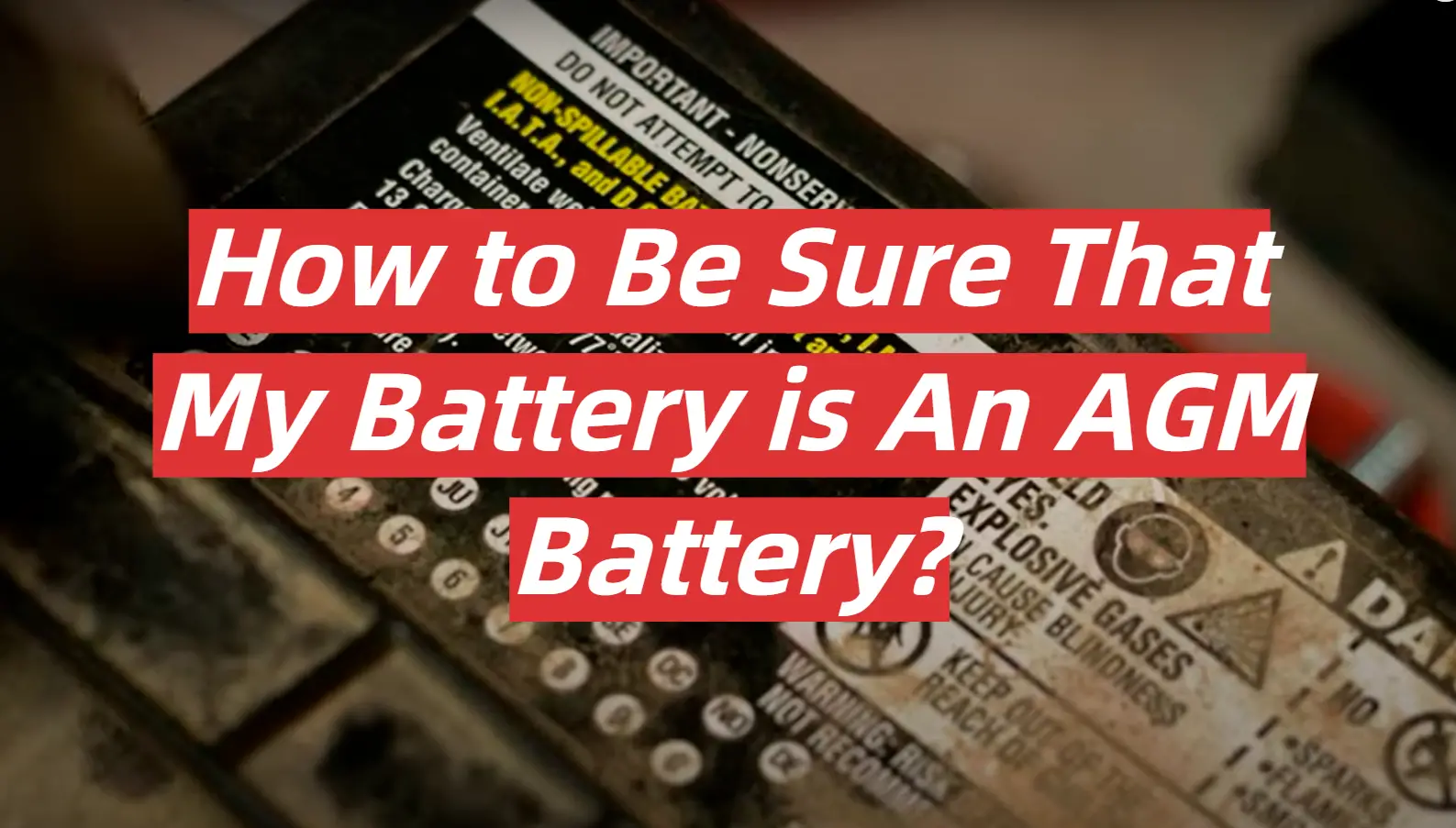
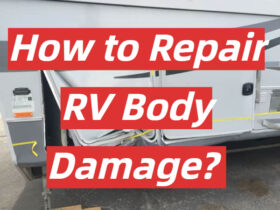


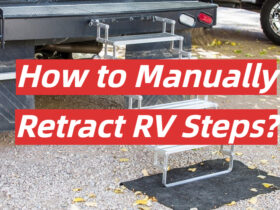
Leave a Reply